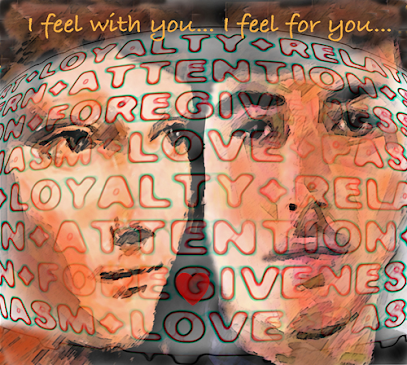Are Arts and Literature Important in Today’s World?
At the crossroads of existential and vocational determinism, the election of Humanities over STEM—a choice I defended against societal incredulity—unearths a perennial dialectic: quid est veritas? In an epoch dominated by algorithmic ascendancy and technocratic utilitarianism, the interrogation of art’s “practical” utility persists with Platonic vigor. Yet, to reductively measure literature’s worth through the myopic lens of GDP metrics or Silicon Valley paychecks is to ignore its ontological function: equipping humanity with the hermeneutic tools to navigate life’s labyrinthine complexities.
Plato’s Republic decried art as thrice-removed from Truth, a frivolous mimicry of shadows. Aristotle, contrarily, posited tragedy as a conduit for catharsis—purification through vicarious suffering. This antinomy reverberates today: critics dismiss literature as escapist fabulism, while proponents venerate its capacity to distill universal human experiences. Consider Macbeth’s hamartia (fatal flaw) or Elizabeth Bennet’s epistemic awakening; these are not mere fictions but allegories of ambition and prejudice that mirror our latent psychodramas.
Art and literature transcend didacticism; they are equipment for living (Burke). Through Hamlet’s soliloquies or Marlow’s moral quandaries, we confront existential dilemmas in vitro, refining our capacity for ethical reasoning. The Cartesian cogito may delineate logic, but it is Dostoevsky’s Underground Man who exposes the irrational undercurrents of human consciousness. Literature, thus, is no luxury—it is the crucible where empathy and critical thinking are forged.
While chronicles document events, literature excavates the pathos beneath phenomena. Tolstoy’s War and Peace transcends Napoleonic dates to interrogate free will versus determinism; Morrison’s Beloved resurrects the silenced trauma of slavery. Postmodernism’s suspicion of grand narratives further elevates art’s role: it resurrects subaltern voices, challenging hegemonies that history often enshrines.
To dismiss art’s tangibility is to ignore its catalytic power. Rachel Carson’s Silent Spring ignited environmentalism; Wollstonecraft’s polemics seeded feminism. Even Netflix dramas, derided as bourgeois escapism, foster collective consciousness about issues like systemic racism (When They See Us) or dystopian technocracy (Black Mirror). Art’s “armchair activism” is, paradoxically, its most potent weapon—a Trojan horse smuggling dissent into mainstream discourse.
In a world calcified by spreadsheet drudgery and algorithmic surveillance, art offers anagnorisis—recognition of our shared humanity. The Mona Lisa’s inscrutable smile, Woolf’s stream of consciousness, or Nolan’s non-linear temporality are not indulgences but lifelines. They provide cathartic reprieve, a psychic sanctuary where the soul, weary from Weberian “iron cage” rationality, reclaims its capacity for wonder.
Nussbaum’s Not for Profit argues that Humanities cultivate the “narrative imagination” vital for democratic citizenship. To evaluate policies, empathize with marginalized groups, or resist authoritarian rhetoric requires the very skills honed by Sophocles and Shakespeare. STEM may build infrastructure, but literature builds the civic conscience that sustains it.
Art’s value lies in its resistance to commodification. It is neither a tool nor a product but an ontological necessity—a mirror and lamp guiding us through modernity’s chiaroscuro. To paraphrase Keats, it is the “negative capability” to dwell in uncertainties without irritable reaching for STEM’s facile answers. In privileging the Humanities, we choose not naiveté but nuance, recognizing that to be fully human is to dwell in questions only art can frame.
WORDS TO BE NOTED-
-
Epistemology
-
Meaning: The study of knowledge, its nature, and validity.
-
-
Hegemonic
-
Meaning: Dominance of one group over others, often through cultural or ideological means.
-
-
Hermeneutic
-
Meaning: Related to interpretation, especially of texts or philosophical concepts.
-
-
Ontological
-
Meaning: Concerned with the nature of existence or being.
-
-
Antinomy
-
Meaning: A contradiction between two principles or conclusions.
-
-
Hamartia
-
Meaning: A fatal flaw leading to a tragic hero’s downfall.
-
-
Psychodramas
-
Meaning: Intense psychological conflicts or emotional struggles.
-
-
Subaltern
-
Meaning: Marginalized groups excluded from dominant power structures.
-
-
Anagnorisis
-
Meaning: A moment of critical discovery or realization (used in tragedy).
-
-
Chiaroscuro
-
Meaning: Contrast between light and dark, often used metaphorically for moral ambiguity.
In an era privileging STEM’s quantifiable efficacy, the passage posits art and literature as indispensable epistemologies for navigating existential and societal complexities. Countering Plato’s dismissal of art as mimetic falsehoods, Aristotle’s catharsis frames literature as a conduit for ethical reasoning through vicarious engagement with characters like Hamlet or Elizabeth Bennet, whose struggles mirror universal psychodramas of ambition, prejudice, and identity. While historiography catalogues events, literature excavates the pathos beneath—Tolstoy interrogating free will, Morrison resurrecting slavery’s trauma—thus challenging hegemonized metanarratives.
Art’s “impracticality” belies its subversive potency: Rachel Carson’s Silent Spring and Friedan’s The Feminine Mystique catalyzed environmental and feminist movements, exemplifying literature as equipment for living (Burke). Beyond activism, art offers Aristotelian refuge from modernity’s Weberian “iron cage,” providing cathartic anagnorisis through Mona Lisa’s enigma or Woolf’s stream of consciousness. Martha Nussbaum’s Not for Profit underscores humanities’ role in cultivating democratic citizenship—narrative imagination fostering empathy and critical dissent against authoritarianism.
Rejecting instrumentalization, the passage asserts art’s ontological necessity: it resists commodification, instead illuminating life’s chiaroscuro through Keatsian “negative capability”—the tolerance for ambiguity STEM often obscures. To elect humanities is not to spurn progress but to privilege nuance, recognizing that to dwell in art’s questions is to safeguard the hermeneutic depth defining humanity itself.
SOURCE- KOLKATA INSTITUTION ARTICLE
WORDS COUNT- 550
FLESCH-KINCAID- 16




Comments
Post a Comment